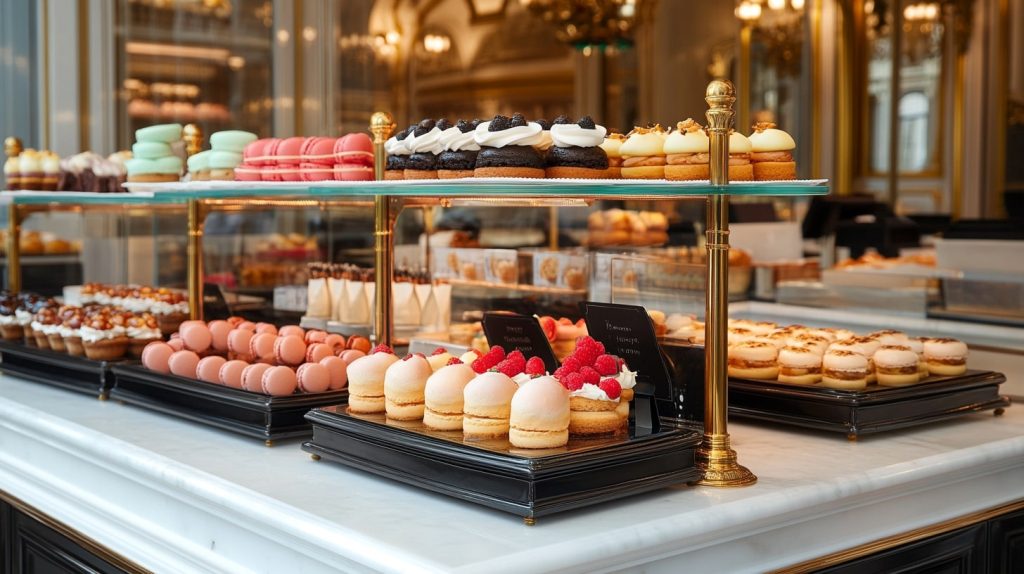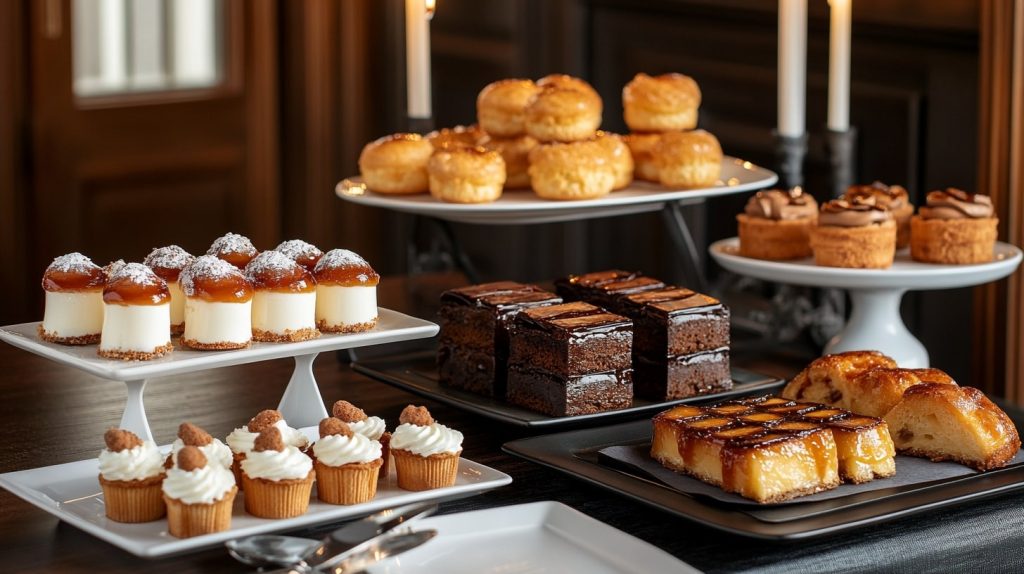
French cuisine is admired worldwide for its sophistication, bold flavors, and attention to detail. Whether you’re a seasoned foodie or simply love experimenting in your kitchen, learning key French cooking terms can elevate your culinary skills. Imagine effortlessly whipping up a silky crème pâtissière or perfectly tempering chocolate like a professional pastry chef.
Many modern cooking phrases originate from French, making it the universal language of gastronomy. This guide will introduce essential French cooking terms, particularly those related to pastry, to help you master classic techniques in no time. Ready to take your skills to a whole new level? Let’s begin!
French Cooking Terms : A Complete Guide
Centuries of tradition have shaped French cuisine into a global culinary powerhouse, leaving an undeniable influence on kitchens worldwide. Even English-language cookbooks use French terms like “mise en place” or “crème brûlée,” showcasing their lasting impact. By understanding these specialized terms, you’ll be able to follow French recipes more precisely and apply authentic techniques in your kitchen. From mastering custards and pastries to perfecting baking and sugar work, this guide covers the essentials to help you approach any recipe with confidence.
Why Learn French Cooking Terms ?
Do you dream of making perfect pastries, delicate sauces, or sophisticated desserts? Understanding key French cooking terms is your secret weapon. Words like “bain-marie” or “sabayon” will transform complex instructions into manageable steps. You’ll gain confidence, discover new flavor pairings, and even adapt recipes with ease. It’s time to cook with finesse—right in your own kitchen!
Most Common French Cooking Terms
Below is a list of essential French culinary vocabulary, with a special focus on pastry and baking techniques.
Chantilly
A sweetened whipped cream, often flavored with vanilla, used as a topping for desserts like pastries and fresh fruit.
Crème Anglaise
A light, pourable custard made with eggs, sugar, and milk, often used as a sauce for desserts.
Crème Brûlée
Crème brûlée is a classic French dessert consisting of a rich vanilla custard topped with a thin layer of caramelized sugar. It’s typically served in individual ramekins and offers a delightful contrast between the creamy base and the crisp, glass-like top. This indulgent treat has become a staple on fine dining menus around the world.
Crème Pâtissière
A thick, egg-based custard used as a filling for pastries such as éclairs, tarts, and mille-feuilles.
Clafoutis
A traditional French dessert made by baking fruit (typically cherries) in a flan-like batter.
Croquembouche
A spectacular tower of cream-filled choux pastry puffs bound together with caramelized sugar, often served at celebrations.
Pâtisserie
In French, pâtisserie refers both to the art of making pastries and to the shop where they are sold. Unlike a boulangerie, which focuses primarily on bread, a pâtisserie specializes in creating refined desserts like tarts, éclairs, and layered cakes. To learn more about what defines a pâtisserie and how it differs from a bakery or viennoiserie, read our full article here.
Sabayon
A light, frothy custard sauce made by whisking egg yolks, sugar, and a liquid (such as wine or citrus juice) over gentle heat.
Soufflé
A baked dish that incorporates whipped egg whites to create a light, airy texture, commonly seen in both sweet and savory variations.
Additional Pastry Techniques and Ingredients
Tamiser
The process of sifting dry ingredients, such as flour or powdered sugar, to aerate them and remove lumps.
Ganache
A smooth and creamy mixture of chocolate and cream, used for glazes, fillings, and truffles.
Pâte à Choux
A light pastry dough used to make profiteroles, éclairs, and gougères.
Pâte Feuilletée
Classic puff pastry made by folding layers of butter and dough to create a flaky, airy texture in pastries like mille-feuilles.
Pâte Sablée
A shortcrust pastry used for tart bases, known for its crumbly, buttery texture.
Pâte Sucrée
A sweetened version of shortcrust pastry, ideal for fruit tarts and delicate pastry shells.
Caraméliser
The process of heating sugar until it turns into caramel, used in desserts like crème caramel or tarte Tatin.
Macaronnage
The folding technique used when preparing macaron batter to achieve the right consistency.
Conclusion
Mastering these essential French cooking terms, especially those related to pastry, will enhance your ability to follow recipes with precision and confidence. From creating a perfect crème pâtissière to assembling an impressive croquembouche, each term represents a fundamental skill in French gastronomy.
By incorporating these techniques into your everyday cooking, you’ll elevate simple ingredients into refined dishes. Understanding this timeless vocabulary bridges the gap between amateur cooking and chef-level mastery, ensuring you can serve exquisite meals with ease.
FAQ
What are the most important French cooking terms to learn ?
Beginners should start with terms like “crème pâtissière,” “chantilly,” and “soufflé.” These cover key techniques for preparing classic French desserts. Learning about “bain-marie” and “sabayon” will also help when working with delicate custards and sauces.
What is the difference between “pâtisserie” and “boulangerie” ?
Though they may seem similar, each has its specialty. A “pâtisserie” focuses on pastries, sweet baked goods, and artistic desserts like éclairs, macarons, and delicate creams. In contrast, a “boulangerie” specializes in bread-making, offering crusty loaves, baguettes, and buttery viennoiseries such as croissants and pain au chocolat. Both are essential pillars of French culinary tradition, celebrating craftsmanship, flavor, and indulgence.



